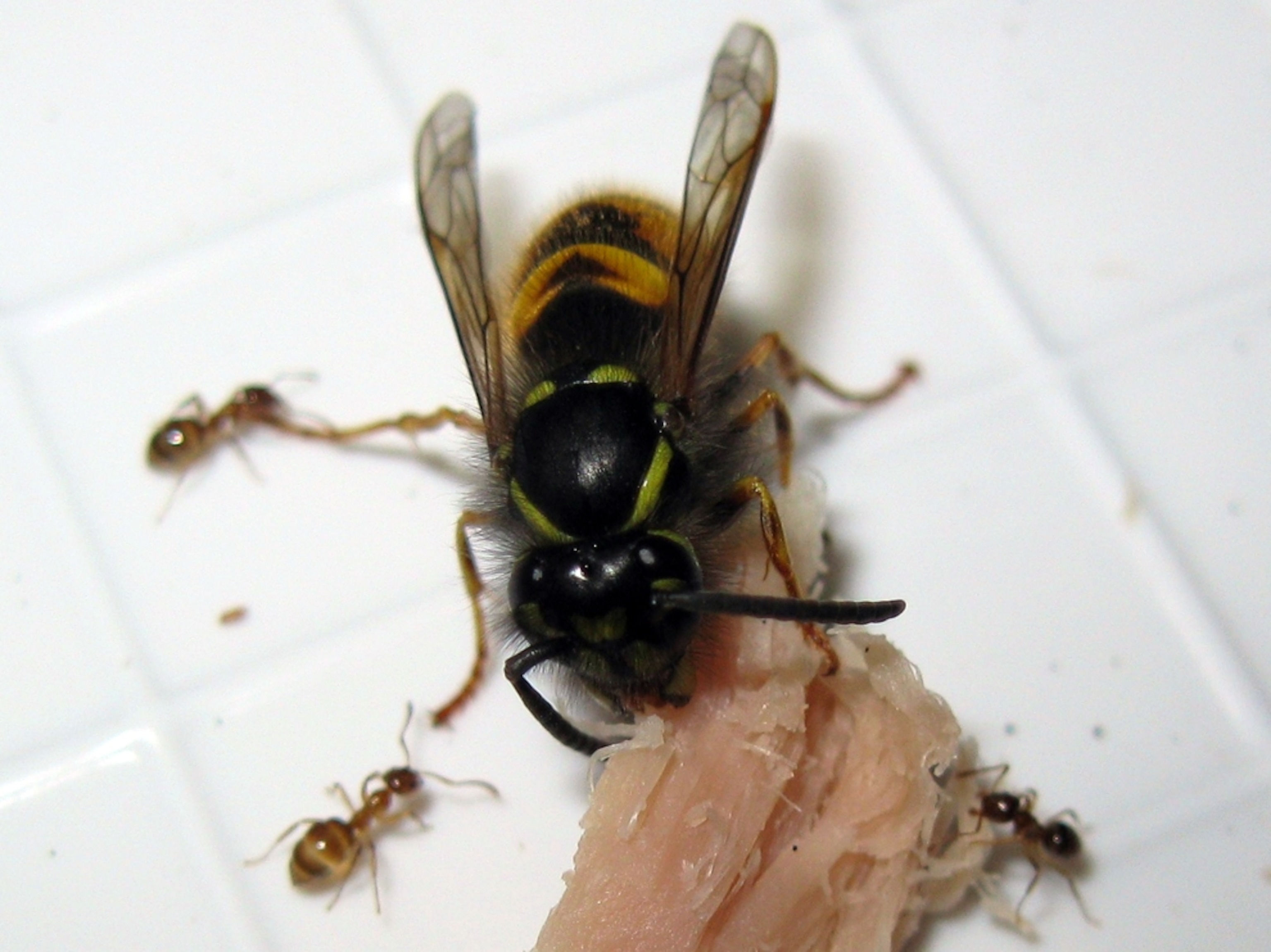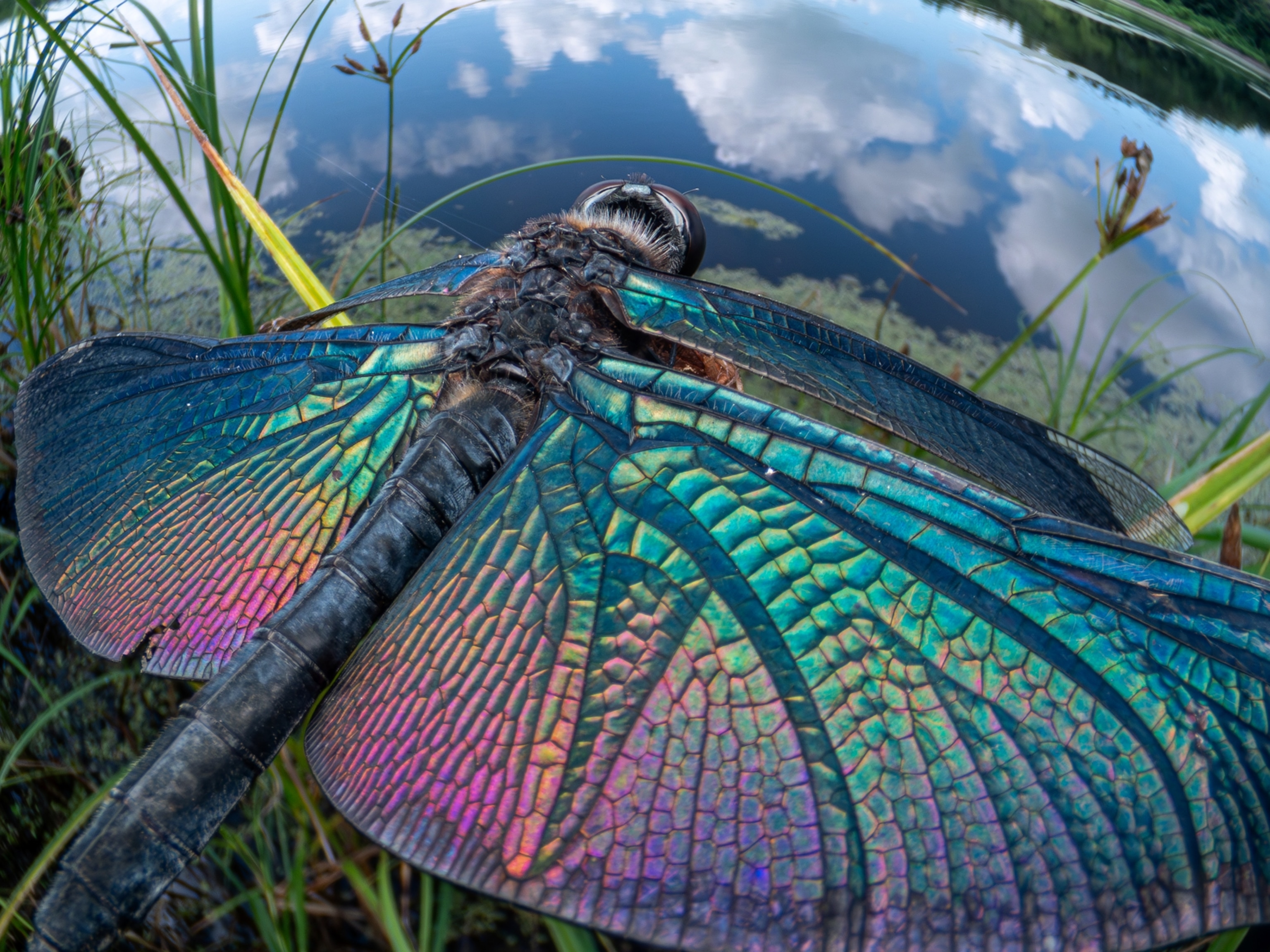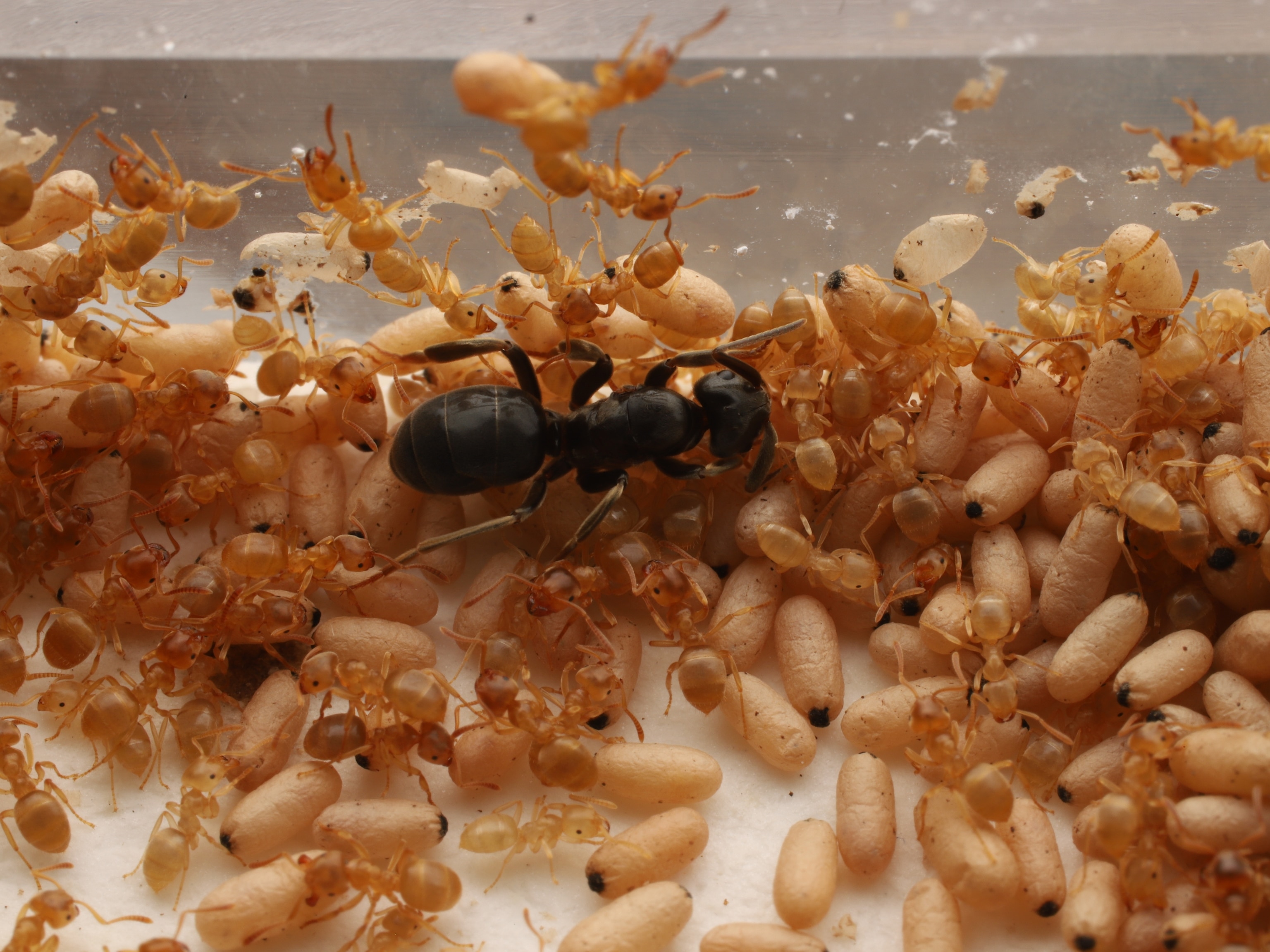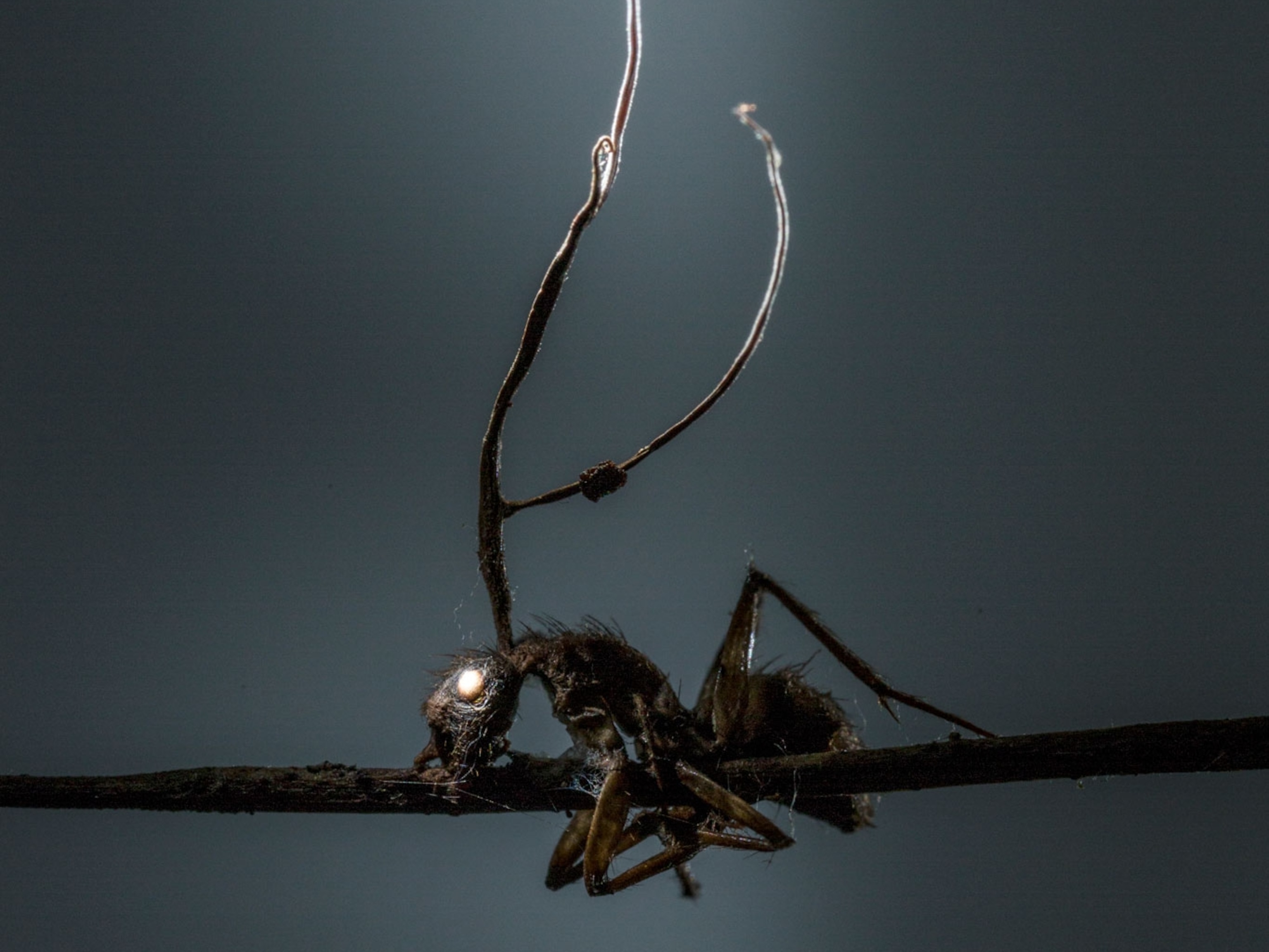
Alien Wasps Abduct, Drop Ants to Get Food
When competing for food with an ant swarm, a wasp will pluck an ant from the pile, fly away, and drop the insect, a new study says.
Looking for a way to banish ants from your picnic? According to a new study, wasps have developed a unique method for dealing with the pests: airlifting them away from the food.
In an experiment done with wild insects, scientists in New Zealand recently witnessed the common wasp, an alien invader to the island country, competing for food with the native ant species Prolasius advenus.
When a wasp approached a mound of food swarming with ants, the wasp would pluck an ant from the pile, fly a ways off, and drop the still-living insect from its jaws.
Watch silent video clips of the wasps dropping ants.
"To the best of our knowledge, this behavior has never been described before," said study co-author Julien Grangier, a biologist at Victoria University of Wellington.
(Related: "Parasitic Wasp Swarm Unleashed to Fight Pests.")
Wasps Bigger, But Not Badder
Common wasps (Vespula vulgaris) are native to North America but were accidentally introduced to New Zealand in the 1970s. The wasps eat other insects and nectar, capturing live prey or scavenging.
(Related: "Alien-Wasp Swarms Devouring Birds, Bugs in Hawaii.")
Grangier and colleague Philip Lester had suspected that the alien wasps were competing with native ants for scarce protein sources in New Zealand beech forests.
This led the pair to establish an experiment in which ants and wasps were presented with samples of high-protein food: little chunks of tuna fish.
The samples were placed at 48 stations in a natural beech forest, with cameras set up near each one. Both wasps and ants visited 45 of the 48 stations, and the cameras recorded 1,295 interactions between the insects.
In the vast majority of instances, the wasps and ants avoided or ignored each other. However, the researchers documented 341 cases when the ants were aggressive toward the wasps, charging at the larger bugs, biting them, or spraying them with formic acid, a natural defense mechanism.
(Related: "Ants Use Acid to Make 'Gardens' in Amazon, Study Says.")
In just 90 encounters the wasps were the aggressors, including 62 cases of ant dropping. The researchers suspect the other 28 times were ant-dropping attempts that the wasps fumbled.
"It was a surprise to see that ants, being 200 times smaller than wasps, can be serious competitors with them," Grangier said.
Ant Acid Behind Wasp Behavior?
Most of the time, the wasps' ant-dropping behavior was unprovoked, with ants being simply grabbed and flown away. In a few instances the ants were unruly before they were grappled and carried off.
The team argues that the acid defense may be why the wasps "ant drop" rather than just killing the smaller insects outright.
"By not crushing ants and dropping them away as fast as possible, wasps just protect themselves, avoiding further contact with this harmful substance," Grangier said.
The wasps' ant-dropping behavior is described in a study published online March 30 by the journal Current Biology.
Also see related pictures: "'Zombie' Ants Found With New Mind-Control Fungi" >>




